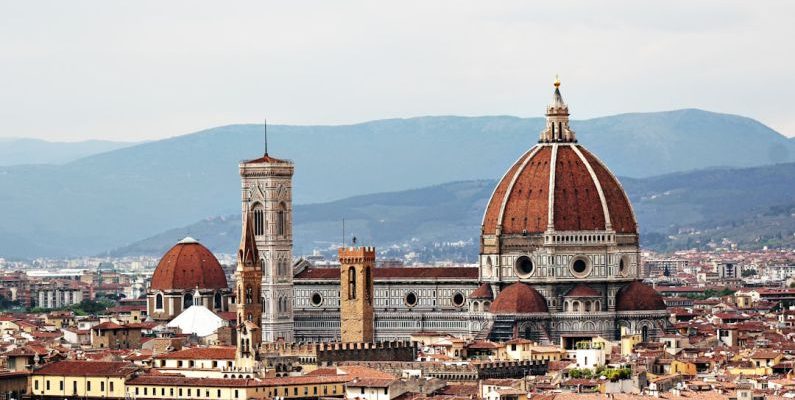Haggling is not just a transactional negotiation in Middle Eastern markets; it is an art form deeply rooted in the region's cultural fabric. These bustling marketplaces, known for their vibrant atmosphere and diverse array of goods, offer a unique experience for both locals and tourists alike. From the aromatic spice stalls of Marrakech's souks to the glittering gold markets of Dubai, haggling is a time-honored tradition that adds a sense of excitement and playfulness to the shopping experience.
Mastering the art of haggling in Middle Eastern markets requires a combination of skill, patience, and cultural understanding. Whether you are a seasoned negotiator or a first-time visitor, these markets offer a glimpse into a world where bargaining is not just expected but celebrated. Here are some tips to help you navigate the bustling bazaars and come away with both a good deal and a memorable experience.
Author: vview
In Eco-Tourism
In today's rapidly urbanizing world, the concept of green cities has gained significant traction as a means to create more sustainable and environmentally friendly urban spaces. Green cities are designed to prioritize sustainability, promote eco-friendly practices, and enhance the overall quality of life for residents. From innovative green infrastructure to urban agriculture initiatives, these cities are leading the way in redefining what it means to live in a modern, sustainable urban environment.
Sustainable Urban Planning
Sustainable urban planning lies at the heart of creating green cities. This approach emphasizes the importance of designing cities in a way that minimizes environmental impact, reduces energy consumption, and promotes efficient land use. By prioritizing public transportation, pedestrian-friendly infrastructure, and green spaces, cities can reduce their carbon footprint and create a more livable environment for residents. Sustainable urban planning also involves incorporating renewable energy sources, such as solar panels and wind turbines, into city infrastructure to reduce reliance on fossil fuels and decrease greenhouse gas emissions.Green Infrastructure
One of the key components of green cities is the development of green infrastructure. This includes the implementation of sustainable drainage systems, green roofs, and permeable pavements to manage stormwater runoff and reduce the risk of flooding. Green infrastructure helps to improve air quality, mitigate urban heat islands, and enhance biodiversity in urban areas. By integrating nature into the built environment, green cities can create healthier and more resilient communities for residents to enjoy.Urban Agriculture
Urban agriculture plays a crucial role in promoting sustainability and food security in green cities. By introducing community gardens, rooftop farms, and urban orchards, cities can provide residents with access to fresh, locally grown produce while reducing the carbon footprint associated with transporting food long distances. Urban agriculture also helps to promote social cohesion, improve food sovereignty, and create green spaces that benefit both humans and wildlife. By integrating agriculture into urban planning strategies, green cities can foster a more sustainable and resilient food system for the future.Waste Management
Effective waste management is essential for creating sustainable cities. Green cities prioritize waste reduction, recycling, and composting to minimize the amount of waste sent to landfills and incinerators. By implementing recycling programs, promoting composting initiatives, and encouraging the use of reusable products, cities can significantly reduce their environmental impact and conserve valuable resources. Green cities also invest in waste-to-energy technologies and innovative recycling processes to turn waste into renewable energy and raw materials, further enhancing their sustainability efforts.Green Building Design
Green building design is another critical aspect of creating sustainable cities. By incorporating energy-efficient technologies, sustainable materials, and passive design strategies, cities can reduce energy consumption, lower greenhouse gas emissions, and improve indoor air quality in buildings. Green buildings also prioritize water conservation, waste reduction, and the use of renewable energy sources to minimize their environmental impact. By promoting green building practices and certifications, green cities can lead the way in creating healthier and more environmentally friendly urban spaces for residents and future generations.Green Transportation
Green transportation is key to reducing carbon emissions and promoting sustainable mobility in cities. Green cities prioritize public transportation, cycling infrastructure, and electric vehicles to reduce traffic congestion, improve air quality, and enhance the overall well-being of residents. By investing in public transit systems, bike-sharing programs, and electric vehicle charging stations, cities can encourage residents to choose sustainable transportation options and reduce their reliance on fossil fuel-powered vehicles. Green transportation initiatives not only help to combat climate change but also create more livable and vibrant urban environments for people to live, work, and play. In conclusion, green cities represent a paradigm shift in urban planning and design, focusing on sustainability, resilience, and quality of life for residents. By incorporating sustainable urban planning practices, green infrastructure, urban agriculture initiatives, waste management strategies, green building design, and green transportation solutions, cities can create more environmentally friendly and livable urban spaces for current and future generations. Green cities are not just a vision for the future but a tangible reality that is already shaping the way we live, work, and interact with our urban environments. As we continue to confront the challenges of climate change and rapid urbanization, green cities offer a roadmap for building a more sustainable and equitable future for all.
In Travel Tips
Traveling with pets can be a rewarding experience, allowing you to create lasting memories with your furry companion. However, it can also be a challenging endeavor that requires careful planning and preparation to ensure a smooth journey for both you and your pet. Whether you're embarking on a road trip, flying to a new destination, or taking a train ride, there are several important factors to consider when traveling with pets.
Choosing the Right Mode of Transportation
When traveling with pets, it's essential to consider the most suitable mode of transportation based on your pet's size, temperament, and specific needs. For road trips, make sure your pet is secured in a well-ventilated carrier or harness to ensure their safety during the journey. If you're flying with your pet, check with the airline for their pet travel policies and make sure to book a direct flight whenever possible to minimize stress on your pet. Additionally, consider the temperature and time of year when traveling with pets to avoid extreme weather conditions that could be harmful to them.Preparing Your Pet for Travel
Before embarking on your journey, it's crucial to prepare your pet for travel to help reduce their anxiety and ensure their comfort throughout the trip. Start by acclimating your pet to their carrier or travel crate well in advance of your travel date to allow them to become familiar with the space. Take short practice trips with your pet to help them get used to being in a moving vehicle or other modes of transportation. Make sure your pet is up-to-date on vaccinations and has proper identification, including a collar with tags and a microchip, in case they get lost during the journey.Packing Essentials for Your Pet
When traveling with pets, it's important to pack essential items to ensure their well-being and comfort during the trip. Some key items to include in your pet's travel kit are food and water bowls, sufficient food and treats for the duration of the journey, medications, a first aid kit, pet waste bags, a leash or harness, and familiar items such as toys or blankets to provide a sense of security. Don't forget to pack any necessary documents, such as health certificates or vaccination records, especially if you're traveling across state lines or internationally.Accommodations and Pet-Friendly Destinations
When planning your itinerary, make sure to research pet-friendly accommodations and destinations to ensure a hassle-free travel experience for you and your pet. Many hotels, vacation rentals, and campgrounds now welcome pets, but it's essential to confirm their pet policies and any additional fees or restrictions before booking your stay. Look for pet-friendly attractions and activities at your destination to include in your itinerary, such as dog-friendly parks, beaches, or hiking trails where your pet can enjoy some exercise and playtime.Managing Your Pet's Behavior
Traveling can be a stressful experience for pets, so it's crucial to manage their behavior to ensure a smooth journey for everyone involved. Consider using calming aids, such as pheromone sprays or natural supplements, to help reduce your pet's anxiety and promote relaxation during travel. Take regular breaks to allow your pet to stretch their legs, use the bathroom, and get some fresh air to prevent restlessness or discomfort. Be patient and understanding with your pet, and provide positive reinforcement and rewards for good behavior to help them feel more at ease in unfamiliar surroundings.Emergency Preparedness and Safety
No matter how well you prepare for your pet's travel, unexpected situations can arise, so it's essential to be prepared for emergencies and prioritize your pet's safety at all times. Keep a list of emergency contacts, including your veterinarian's contact information and local veterinary clinics at your destination, in case your pet needs medical attention while traveling. Research pet-friendly emergency shelters or pet hospitals along your route in case of a natural disaster or other unforeseen events. Ensure your pet is wearing a secure collar with identification tags and is microchipped with up-to-date contact information in case they become separated from you during the journey.Conclusion: Ensuring a Happy and Safe Journey for Your Pet
Traveling with pets can be a rewarding experience that strengthens the bond between you and your furry friend. By following these tips and guidelines for traveling with pets, you can ensure a happy and safe journey for your pet while creating unforgettable memories together. Remember to plan ahead, pack essential items, choose pet-friendly accommodations, and prioritize your pet's well-being and comfort throughout the trip. With careful preparation and consideration, you can enjoy a stress-free travel experience with your beloved pet by your side.
In Travel Gear
Traveling can be one of the most enriching experiences in life. Whether you are exploring a new city, hiking in the mountains, or backpacking through multiple countries, having the right travel backpack is essential for a smooth and enjoyable journey. With so many options available in the market, choosing the right travel backpack can be overwhelming. Here are some key factors to consider when selecting the perfect travel backpack for your next adventure.
Size and Capacity
The first step in choosing a travel backpack is determining the size and capacity that will best suit your needs. Consider the duration of your trip and the type of activities you will be engaging in. If you are planning a weekend getaway, a smaller backpack with a capacity of around 30-40 liters may be sufficient. However, for longer trips or hikes, opt for a larger backpack with a capacity of 50 liters or more to accommodate all your essentials.Comfort and Fit
Comfort is paramount when it comes to choosing a travel backpack. Look for a backpack with padded shoulder straps, a cushioned back panel, and a hip belt to distribute the weight evenly and reduce strain on your back and shoulders. Ensure that the backpack fits snugly against your back and that the straps are adjustable to provide a customized fit. Trying on the backpack before purchasing is recommended to ensure maximum comfort during your travels.Durability and Material
Investing in a durable travel backpack is crucial to ensure that it can withstand the rigors of travel. Look for backpacks made from high-quality materials such as nylon, polyester, or Cordura, which are known for their durability and water resistance. Reinforced stitching, sturdy zippers, and robust buckles are also important features to consider when assessing the durability of a travel backpack.Organization and Accessibility
Efficient organization is key to keeping your belongings tidy and easily accessible while on the go. Look for a backpack with multiple compartments, pockets, and internal organizers to help you pack efficiently and stay organized throughout your trip. Consider features such as a padded laptop sleeve, water bottle pockets, and external attachment points for additional gear. Easy access to essential items such as passports, wallets, and snacks can make your travel experience much more convenient.Weight and Portability
Travel backpacks come in various weights, and it is essential to strike a balance between durability and portability. Opt for a lightweight backpack that offers the necessary features without adding unnecessary bulk. Consider the weight of the empty backpack, as it will impact the overall weight of your belongings once packed. Additionally, look for backpacks that can be easily folded or compressed for storage when not in use.Style and Aesthetics
While functionality is paramount, the style and aesthetics of a travel backpack also play a significant role in your decision-making process. Choose a backpack that reflects your personal style and preferences, whether you prefer a sleek and minimalist design or a bold and colorful pattern. Consider factors such as color, shape, and design elements to ensure that your travel backpack not only meets your practical needs but also aligns with your aesthetic sensibilities.Conclusion: Finding Your Perfect Travel Companion
Choosing the right travel backpack is a crucial decision that can significantly impact your travel experience. By considering factors such as size, comfort, durability, organization, weight, and style, you can select a backpack that meets your specific needs and enhances your journey. Remember that the perfect travel backpack is not a one-size-fits-all solution, so take the time to assess your requirements and preferences before making a decision. With the right travel backpack by your side, you can embark on your adventures with confidence and convenience.
In Travel Tips
Capturing memorable travel photos is a wonderful way to preserve your experiences and share them with others. Whether you're exploring a bustling city, serene countryside, or exotic beach destination, photography allows you to document the beauty and unique moments you encounter along the way. To enhance your travel photography skills and create captivating shots that truly stand out, consider incorporating the following tips into your shooting routine.
Understand Your Camera Settings
Before embarking on your next travel adventure, take the time to familiarize yourself with your camera settings. Understanding how to adjust elements such as aperture, shutter speed, and ISO will enable you to adapt to different lighting conditions and capture stunning images. Experiment with various settings to see how they affect the outcome of your photos, and don't be afraid to step out of your comfort zone to achieve creative results.Embrace Natural Light
One of the most crucial aspects of photography is lighting. When traveling, make the most of natural light to enhance your shots. Early morning and late afternoon are often referred to as the "golden hours" due to the soft, warm light they provide, which can add a magical touch to your photographs. Avoid shooting in harsh midday sunlight, as it can create harsh shadows and washed-out colors. Instead, look for shaded areas or use reflectors to diffuse light and create more flattering portraits.Focus on Composition
Composition plays a key role in creating visually appealing images. Experiment with different techniques such as the rule of thirds, leading lines, and framing to add interest and depth to your photos. Consider the placement of your subject within the frame and pay attention to background elements that may distract from the main focal point. By carefully composing your shots, you can draw viewers' eyes to the most important elements of your photograph and tell a compelling story through your imagery.Capture Candid Moments
While staged shots have their place in travel photography, don't underestimate the power of capturing candid moments. Candid photos have a raw, authentic quality that can convey the true essence of a place or experience. Be observant and ready to snap photos spontaneously when you encounter interesting scenes or interactions. By being discreet and blending into your surroundings, you can capture genuine emotions and fleeting moments that add a sense of realism to your travel images.Experiment with Perspectives
To add a fresh and dynamic element to your travel photos, try experimenting with different perspectives. Instead of shooting from eye level, consider getting low to the ground or finding a high vantage point to create unique compositions. Changing your perspective can transform ordinary scenes into extraordinary images and offer viewers a fresh outlook on familiar subjects. Don't be afraid to take risks and explore unconventional angles to unleash your creativity and capture truly captivating shots.Edit Thoughtfully
Post-processing is an essential part of the photography workflow, but it's important to edit your images thoughtfully. Avoid over-editing your photos with excessive filters or effects that can detract from their natural beauty. Focus on enhancing the colors, contrast, and sharpness of your images in a subtle and tasteful manner. Use editing tools to fine-tune your photos and bring out the best in each shot while staying true to your artistic vision.Share Your Story
Every travel photo you capture tells a story, so don't be afraid to share the narrative behind your images. Whether through captions on social media or a personal blog, provide context and insights into the places you've visited and the experiences you've had. Sharing your travel photography journey allows others to connect with your adventures and gain a deeper appreciation for the world around them. Incorporate these photography tips into your next travel expedition to elevate your images and create a stunning visual record of your experiences. By understanding your camera settings, embracing natural light, focusing on composition, capturing candid moments, experimenting with perspectives, editing thoughtfully, and sharing your story, you can capture captivating travel shots that transport viewers to new destinations and inspire a sense of wanderlust. Let your creativity shine through your photography and showcase the beauty and magic of the world through your lens.
Traveling is not just about seeing famous landmarks or staying in luxurious hotels; it's also about immersing oneself in the local culture, and one of the best ways to do that is by sampling the street food. Street food is a window into a country's culinary traditions, offering a taste of authentic flavors and local ingredients. From bustling markets in Asia to vibrant food trucks in North America, street food is a delicious adventure waiting to be experienced. Let's take a culinary journey around the world and explore the diverse and mouthwatering street food offerings that await eager foodies.
Asia: A Feast for the Senses
Asia is a paradise for street food enthusiasts, with bustling markets and vibrant street stalls offering an array of flavors and textures. In Bangkok, Thailand, the scent of sizzling pad Thai fills the air, while in Tokyo, Japan, savory yakitori skewers tempt passersby. From steaming bowls of pho in Vietnam to spicy curries in India, Asian street food is a feast for the senses, with vendors skillfully preparing dishes right before your eyes. Whether you're exploring the night markets in Taipei or sampling dim sum in Hong Kong, the culinary diversity of Asian street food is sure to leave you craving more.Europe: A Gastronomic Delight
Europe may be known for its fine dining establishments, but its street food scene is just as impressive. In Istanbul, Turkey, the aroma of freshly baked simit bread wafts through the streets, while in Italy, food trucks serve up crispy arancini and creamy gelato. From Spanish churros drizzled with chocolate to French crepes stuffed with Nutella, European street food offers a tantalizing mix of sweet and savory treats. Whether you're wandering the cobblestone streets of Prague or sipping mulled wine at a Christmas market in Germany, Europe's street food delights are a gastronomic delight not to be missed.South America: Bold and Flavorful
South America is a melting pot of culinary influences, and its street food reflects this vibrant mix of flavors and ingredients. In Mexico City, the sizzle of carne asada tacos draws hungry crowds, while in Brazil, vendors grill up succulent churrasco skewers. From spicy empanadas in Argentina to refreshing ceviche in Peru, South American street food is bold, flavorful, and packed with local ingredients. Whether you're browsing the markets in Colombia or sampling arepas in Venezuela, the street food scene in South America is a delicious celebration of the region's rich culinary heritage.North America: Fusion and Innovation
North America's street food scene is a melting pot of global flavors and culinary innovation, with food trucks and pop-up stalls serving up a diverse range of dishes. In New York City, you can feast on gourmet burgers and artisanal ice cream, while in Los Angeles, Korean BBQ tacos and vegan sushi rolls are the order of the day. From poutine in Canada to lobster rolls in Maine, North American street food is a fusion of tastes and textures that reflect the region's diverse cultural influences. Whether you're exploring the food truck scene in Portland or sampling beignets in New Orleans, North America's street food offerings are as eclectic and diverse as the continent itself.Conclusion: A Culinary Adventure Awaits
Sampling street food around the world is not just about satisfying your taste buds; it's about connecting with local communities, experiencing new flavors, and creating lasting memories. From the aromatic spices of Asia to the rich flavors of Europe, the bold tastes of South America to the innovative dishes of North America, street food offers a culinary adventure like no other. So next time you're traveling, be sure to step off the beaten path and explore the vibrant world of street food – you never know what delicious surprises await you. Bon appétit!
Mediterranean cuisine is renowned worldwide for its vibrant flavors, fresh ingredients, and healthful properties. From the sun-drenched coasts of Greece to the bustling markets of Morocco, the gastronomic delights of Mediterranean cuisine offer a sensory journey like no other. Let's delve into the rich tapestry of flavors and dishes that make this culinary tradition so beloved.
**The Diversity of Mediterranean Cuisine**
Mediterranean cuisine encompasses a diverse range of culinary traditions from countries that border the Mediterranean Sea, including Italy, Greece, Spain, Turkey, and many more. Despite the regional variations, there are common threads that run through Mediterranean cuisine, such as an emphasis on fresh, seasonal ingredients like olive oil, tomatoes, herbs, and seafood. The use of herbs and spices like oregano, basil, and garlic adds depth and complexity to dishes, creating a symphony of flavors that is both comforting and exciting.
**The Health Benefits of Mediterranean Diet**
One of the key reasons why Mediterranean cuisine has gained global popularity is its association with health and longevity. The Mediterranean diet, characterized by high consumption of fruits, vegetables, whole grains, and olive oil, has been linked to numerous health benefits, including reduced risk of heart disease, stroke, and cancer. The inclusion of lean proteins like fish and poultry, as well as moderate amounts of dairy and red wine, further contribute to the overall healthfulness of this diet.
**Signature Dishes of the Mediterranean**
Each country in the Mediterranean region boasts its own signature dishes that are a testament to the rich culinary heritage of the area. From Italy's classic pasta dishes like spaghetti alla puttanesca and risotto to Spain's iconic paella and tapas, the Mediterranean is a treasure trove of culinary delights. Greece's moussaka, Turkey's kebabs, and Morocco's tagines are just a few examples of the diverse and flavorful dishes that make Mediterranean cuisine so enticing.
**Fresh and Flavorful Ingredients**
At the heart of Mediterranean cuisine are the fresh and flavorful ingredients that form the foundation of each dish. Olive oil, a staple in Mediterranean cooking, not only adds a rich, fruity flavor to dishes but also provides numerous health benefits due to its high levels of monounsaturated fats. Tomatoes, garlic, onions, and fresh herbs like parsley, mint, and basil are used liberally to add brightness and depth to Mediterranean dishes. Seafood, particularly fish like salmon, sardines, and tuna, features prominently in Mediterranean cuisine, providing a lean source of protein and essential omega-3 fatty acids.
**The Art of Mezze: Small Plates, Big Flavors**
One of the hallmarks of Mediterranean cuisine is the concept of mezze, a selection of small dishes served as appetizers or tapas. Mezze allows diners to sample a variety of flavors and textures in one meal, making it a social and interactive dining experience. From hummus and baba ghanoush to stuffed grape leaves and grilled halloumi cheese, mezze dishes showcase the diverse flavors and ingredients of the Mediterranean region in a fun and approachable way.
**Savoring the Mediterranean Experience**
In conclusion, the gastronomic delights of Mediterranean cuisine offer a sensory journey that captivates the taste buds and nourishes the body. With its emphasis on fresh, seasonal ingredients, healthful properties, and diverse flavors, Mediterranean cuisine continues to inspire and delight food lovers around the world. Whether you're enjoying a leisurely meal by the sea in Greece or exploring the bustling markets of Morocco, the vibrant and flavorful dishes of the Mediterranean are sure to leave a lasting impression. So, next time you sit down to a Mediterranean feast, savor each bite and appreciate the rich culinary heritage that has shaped this beloved cuisine.
Pasta is a staple in Italian cuisine, loved by many around the world for its versatility and comforting flavors. From classic shapes like spaghetti and penne to more unique varieties such as orecchiette and strozzapreti, Italy boasts a diverse range of pasta types that cater to every taste preference. Let's take a delicious tour through some of Italy's most beloved pasta varieties.
Classic Shapes: Spaghetti, Penne, and Farfalle
Spaghetti is perhaps the most iconic pasta shape, known for its long, thin strands that are perfect for twirling around a fork. This versatile pasta pairs well with a variety of sauces, from traditional marinara to creamy carbonara. Penne, with its tube-like shape and diagonal cut ends, is ideal for holding chunky sauces and ingredients, making it a popular choice for baked pasta dishes. Farfalle, also known as bowtie pasta, adds a whimsical touch to any dish and works beautifully in pasta salads or with light cream sauces.Tubular Delights: Rigatoni, Cannelloni, and Paccheri
Rigatoni, with its wide tubes and ridged texture, is a hearty pasta that stands up well to rich, meaty sauces like Bolognese. Cannelloni, a large cylindrical pasta often filled with a savory mixture of cheese and spinach or meat, is a comforting choice for baked pasta dishes. Paccheri, large tubes with a smooth surface, are perfect for capturing creamy sauces or seafood-based recipes.Unique Shapes: Orecchiette, Cavatelli, and Strozzapreti
Orecchiette, which translates to "little ears" in Italian, is a small, concave pasta that hails from the southern region of Puglia. Its unique shape is perfect for catching sauces and small chunks of ingredients, making it a favorite in dishes like orecchiette with broccoli rabe and sausage. Cavatelli, small pasta shells that are rolled into a slight hollow shape, are often served with hearty meat sauces or pesto. Strozzapreti, a hand-rolled pasta resembling twisted ropes, is a rustic choice that pairs well with chunky vegetable sauces or ragù.Stuffed Delicacies: Ravioli, Tortellini, and Agnolotti
Ravioli, square or round parcels of pasta filled with various ingredients such as cheese, meat, or vegetables, are a decadent treat that can be served with a simple butter and sage sauce or a rich tomato-based ragù. Tortellini, small ring-shaped pasta filled with meat, cheese, or a combination of both, are a popular choice in broths or creamy sauces. Agnolotti, similar to ravioli but with a half-moon shape, are often filled with a flavorful blend of meats and cheeses and served with a light butter sauce.Sauce Pairings: Pesto, Carbonara, and Amatriciana
Pesto, a vibrant sauce made from fresh basil, pine nuts, Parmesan cheese, garlic, and olive oil, is a classic pairing for pasta shapes like trofie or trenette. Carbonara, a rich sauce made with eggs, cheese, pancetta, and black pepper, is traditionally served with spaghetti or rigatoni. Amatriciana, a tomato-based sauce with onions, guanciale (cured pork jowl), pecorino cheese, and red pepper flakes, is best enjoyed with bucatini or rigatoni.Innovative Twists: Squid Ink Pasta, Saffron Tagliatelle, and Spinach Gnocchi
Italy is also home to innovative pasta varieties that push the boundaries of tradition. Squid ink pasta, made with the ink of cuttlefish or squid, boasts a striking black color and a subtle seafood flavor that pairs well with seafood sauces. Saffron tagliatelle, infused with the delicate flavor and golden hue of saffron, adds a touch of luxury to any dish. Spinach gnocchi, dumplings made with potato, spinach, flour, and egg, offer a vibrant green color and a light, pillowy texture that complements creamy sauces or simple butter and sage.Exploring Italy's Pasta Culture
Italian cuisine is a celebration of tradition, creativity, and the art of simple, high-quality ingredients. The country's pasta varieties reflect this ethos, offering a wide array of shapes, textures, and flavors that cater to every palate. Whether you prefer classic shapes like spaghetti and penne or are eager to try unique varieties like orecchiette and strozzapreti, Italy's pasta culture invites you on a delicious tour of culinary delights that are sure to satisfy your cravings and ignite your passion for all things pasta. In conclusion, Italy's pasta varieties are a testament to the country's rich culinary heritage and dedication to craftsmanship. With each bite, you can taste the tradition, innovation, and love that goes into creating these beloved pasta shapes. So, grab a fork, twirl up your favorite pasta variety, and savor the flavors of Italy on a delicious tour that will transport you to the heart of Italian cuisine. Buon appetito!
Nestled in the heart of Tuscany, Florence stands as a timeless gem that exudes the essence of the Renaissance era. The city's rich history, unparalleled artistic heritage, and architectural marvels make it a must-visit destination for travelers seeking a glimpse into a bygone era of intellectual and cultural flourishing. From iconic landmarks to hidden treasures, Florence offers a tapestry of experiences that enchant visitors and leave a lasting impression. Let's delve into the Renaissance gem that is Florence, Italy.
**The Birthplace of the Renaissance**
Florence holds the esteemed title of being the birthplace of the Renaissance, a period of profound intellectual and artistic growth that swept across Europe in the 14th to 17th centuries. The city's patronage of the arts, flourishing trade, and intellectual curiosity fostered an environment where creative geniuses such as Leonardo da Vinci, Michelangelo, and Botticelli thrived. Walking through the streets of Florence is like stepping back in time, where every corner holds a piece of this remarkable cultural heritage.
**Architectural Marvels**
One of the most striking features of Florence is its architectural landscape, which seamlessly blends medieval structures with Renaissance masterpieces. The iconic Duomo, with its distinctive red dome dominating the city skyline, is a testament to the ingenuity of Renaissance architecture. The intricate façade of the Basilica di Santa Croce, the grandeur of Palazzo Vecchio, and the elegant Ponte Vecchio bridge spanning the Arno River are just a few examples of the architectural splendors that await visitors in Florence.
**Artistic Treasures**
For art enthusiasts, Florence is a veritable paradise boasting an unparalleled collection of masterpieces housed in world-renowned museums and galleries. The Uffizi Gallery, home to works by the likes of Botticelli, Da Vinci, and Raphael, offers a captivating journey through the evolution of Renaissance art. Meanwhile, the Accademia Gallery is where Michelangelo's iconic statue of David stands in all its marble glory, a symbol of artistic perfection and human beauty. Florence truly encapsulates the artistic spirit of the Renaissance, inviting visitors to immerse themselves in a world of creativity and inspiration.
**Culinary Delights**
Beyond its artistic and architectural wonders, Florence also captivates visitors with its delectable culinary offerings. The city's vibrant food scene showcases the best of Tuscan cuisine, from sumptuous ribollita (a hearty vegetable soup) to savory bistecca alla fiorentina (Florentine-style steak). Indulge in a glass of Chianti wine produced in the nearby vineyards or savor a scoop of creamy gelato while strolling along the cobblestone streets. Florence's culinary heritage is a feast for the senses, inviting visitors to savor the flavors of Tuscany.
**The Timeless Charm of Florence**
As day turns into night, Florence takes on a magical aura, with the soft glow of streetlights illuminating its historic squares and narrow alleyways. The city's timeless charm is palpable, beckoning visitors to explore its hidden corners and unravel its secrets. Whether wandering through the bustling markets of San Lorenzo, admiring the panoramic views from Piazzale Michelangelo, or simply sipping espresso at a sidewalk cafe, Florence casts a spell that lingers long after one's visit.
**Embracing the Renaissance Spirit**
In conclusion, Florence stands as a living testament to the Renaissance spirit, where art, culture, and history converge to create a truly unforgettable experience. The city's architectural marvels, artistic treasures, culinary delights, and timeless charm make it a destination that resonates with travelers from around the world. For those seeking to immerse themselves in the beauty and creativity of the Renaissance era, Florence remains a gem waiting to be discovered and cherished.
In Solo Travel
Embarking on a solo adventure can be an exhilarating and transformative experience. Whether you're planning a backpacking trip through Europe, a soul-searching journey in Southeast Asia, or a road trip across your own country, budgeting plays a crucial role in ensuring a successful and stress-free adventure. In this article, we will explore practical strategies for budgeting for your solo adventure, allowing you to make the most of your travels without breaking the bank.









